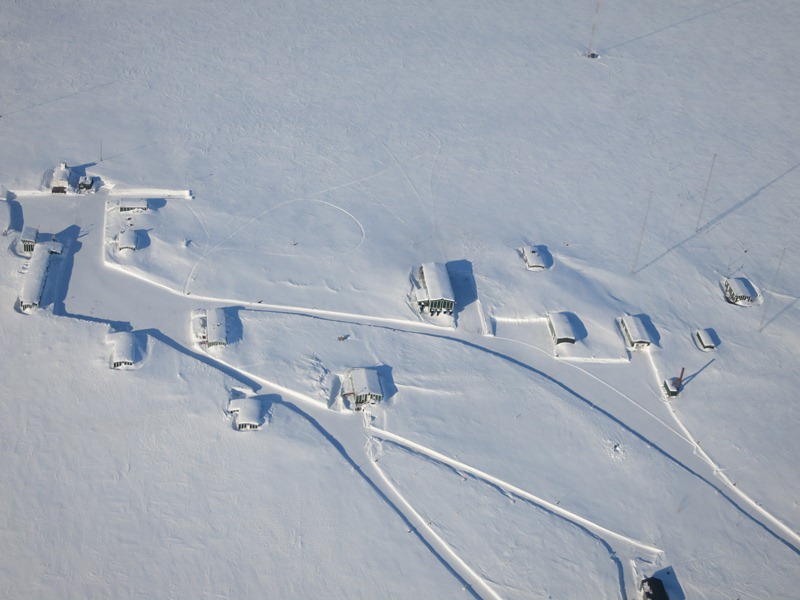After surveying Austfonna, Svalbard, on Saturday 3 May, we had a short stop in Longyearbyen to refuel and say goodbye to Sine, who was heading home.
Late in the afternoon, we headed for Station Nord in northeast Greenland, measuring the sea ice on the way.
We also surveyed Flade Isblink before arriving at Station Nord, where we landed just in time for the big Saturday night dinner.
We enjoyed the following day off and on Monday set out for Thule. We started the measurements over Independence Fjord then climbed its glacier onto the ice sheet.
Other than that, the trip from Station Nord to Thule was dominated by the endless whites of the Greenland ice sheet.
The weather was clear on Tuesday morning and the forecast for Devon Island was fair.
After talking to the team of scientists on the Devon ice cap, we decided to head over there to take measurements.
On the lee side we had some heavy turbulence and along with the increasing low cloud we decided to shorten the planned flight a bit.
The trip to Devon, however, was a success since we were able to precisely overfly a corner reflector on the ice cap which had been placed by the team on the ice.
We thank our two skilled pilots for their ability to manoeuvre the old POF airplane towards the right spot.
Another survey was planned for Wednesday, but unfortunately the weather forecast and a talk with the scientists on Devon made it clear that we would not be able to fly there that day.
Also the forecast for the coming days wasn’t looking good. We decided to use the good weather predicted on the Greenland ice sheet to meet up with CryoSat satellite and follow its track down the western part of the ice sheet.
On the way, we past the NEEM ice core site, where the buildings and cargo were clearly visible.
At the end of a good day flying over the ice, we had a spectacular view of the ice sheet’s outlet glaciers, as we flew over the coastal mountains of Nuussuaq. We then landed in Qaarsut.
From Qaarsut, we did our last flights for the CryoSat campaign – these were over an area near Ilulissat: Jakobshavn Isbræ and its catchment area, and the EGIG line on the transit back to Iceland.
Finally over the weekend of 10–11 May, we dismantled the equipment and packed it up
Now, a lot of data processing is waiting ……. thanks for the huge effort to all who were involved.
Post from: DTU Space team









Discussion: no comments